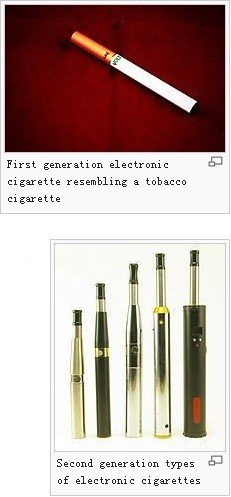博文
中国人的“第五”大发明!
|||
世界公认的中国古代四大发明已是人人皆知,那就是造纸术、指南针、火药、印刷术,但近代中国似乎没有什么拿得出手的大发明了,登陆月球的宇宙飞船是外国人发明的,轰炸日本广岛、长崎的原子弹也是外国人发明的,如今人手一部的手机里的芯片还是外国人发明的。
很多人可能不知道,在男人圈里流行多年的“电子烟”(e-cigarette)却是一个中国人发明的,他的名字叫韩力(Hon Lik)。正是他创立的“XX”品牌让电子烟走向世界!因此,电子烟堪称中国人的“第五”大发明。
有关电子烟对世界的影响,请看以下由维基百科给出的统计数据:2011年,美国成年人电子烟的吸烟率达3.4%;2012年,美国高中生电子烟的吸烟率升至10%;2012年,英国使用电子烟的人数为70万人;2013年猛增到210万人。
另一项调查显示,2011年,美国初高中生的电子吸烟人数为7.9万人,2013年增加到26.3万人。中国烟民占世界烟民的1/4,多达3.5亿人,而中国又是电子烟的原产国,但究竟有多少人吸普通烟和多少人吸电子烟却没有权威的统计数据。
电子烟跟普通烟的共同点是都含有尼古丁(烟碱),按理说吸电子烟也能让人上瘾,对戒烟应该没有什么用。但是,早前的一项调查显示,85%的人购买电子烟的目的就是为了戒烟,其中有74%的人自从开始吸电子烟后就不再吸普通烟了,70%的人在吸完电子烟后烟瘾确实减少了。
最近,美国北卡罗来纳大学医学院在128名医生中所做的调查发现,67%的医生认为电子烟能帮助瘾君子戒烟,还有30%的医生表示会把电子烟推荐给戒烟者。但是,有13%的医生并不知道电子烟尚未被美国FDA批准用于戒烟,而且医生们对电子烟安全性的认识也不统一。
实际上,电子烟中含有19种有害化学品,其中有些还是致癌物,尤其是作为造雾剂的丙二醇燃烧后也能产生有毒气体。不过,电子烟完全可以改为纯尼古丁型,也可以换用其他造雾剂,只是尼古丁成瘾给青年人带来的危害仍屡遭诟病。
电子烟的益处是否大于害处?目前还难以下结论,仍需继续深入研究,但愿电子烟的发明给人类带来的是健康而不是危害。
参考资料链接:
Physician attitudes about use of e-cigarettes
E-cigarettes: Known and unknown dangers
E-cigarettes may help smokers quit, but research is insufficient

WIN-Initiative/ Riser/ Getty Images
Next time you see someone smoking in a nonsmoking area and you are just about to ask them to put it out, well here is one reason to do a double check first. An electronic cigarette looks almost exactly like a real cigarette and it is easy to mistake someone using an electronic cigarette for smoking a real cigarette. However, it is actually a battery operated device that allows one to inhale vaporized nicotine and simulates the experience of smoking a real cigarette.
When a person smokes an electronic cigarette they look exactly like they are smoking a tobacco filled cigarette. By inhaling, the smoker pulls the liquid nicotine into the atomizer chamber, the electronics heat up the liquid and vaporizes it and passes the vapor on to the smoker.
The nicotine vapor enters the smokers' lungs and voila, a nicotine high occurs. The vapor even looks like cigarette smoke. Other features of the e-cig may include a led light at the end of the cigarette that emulates the flame of burning tobacco.
Invention
In 1963, Herbert Gilbert patented "a smokeless non-tobacco cigarette". In his patent Gilbert described how his device worked, by "replacing burning tobacco and paper with heated, moist, flavored air." Gilbert's device involved no nicotine, smokers of Gilbert's device enjoyed flavored steam. Attempts to commercialize Gilbert's invention failed and his product fell into obscurity. However, it deserves a mention as the earliest patent for an electronic cigarette.
Better known is the invention of Chinese pharmacist Hon Lik, who patented the first nicotine based electronic cigarette in 2003. The following year, Hon Lik was the first person to manufacture and sell such a product, first in the Chinese market and then internationally.
Are They Safe?
Electronic cigarettes are no longer considered a smoking cessation tool as they were once promoted as being. Nicotine is addictive, however, e-cigs do not have the harmful tars that regular commercial cigarettes do contain but unfortunately they might have other harmful chemical ingredients included. Toxic substance found in an examination of e-cigs by the FDA included things like diethylene glycol , a toxic chemical used in antifreeze.
There is also controversy over how to regulate electronic cigarettes, age restrictions, and if they should or should not be included in smoking bans. Secondhand vapors could be just as bad as secondhand smoke. Some countries have banned the sale and marketing of e-cigs entirely.
In September 2010, the FDA issued a number of warning letters to electronic cigarette distributors for various violations of the Federal Food, Drug, and Cosmetic Act including “violations of good manufacturing practices, making unsubstantiated drug claims, and using the devices as delivery mechanisms for active pharmaceutical ingredients.”
A Booming Business
If electronic cigarettes do continue to remain legal in the United States and other countries, there are huge profits to be made. According to Forbes.com manufacturers make between $250 million to $500 million estimated annually and while that is a small portion of the $100 billion US tobacco market, a government survey found that 2.7% of U.S. adults had tried e-cigarettes by 2010, up from 0.6% a year earlier, the kind of statistics that potential trends are made of.
https://blog.sciencenet.cn/blog-281238-823729.html
上一篇:学术争论(2)先有肥胖还是先有炎症?
下一篇:痛陈西医“盲人摸象”治病之一例

